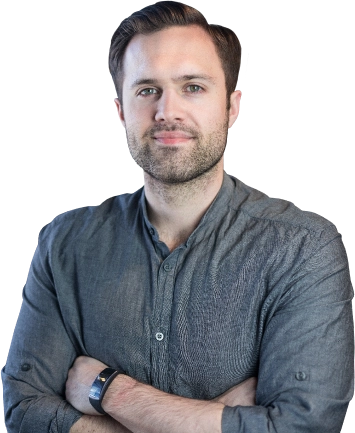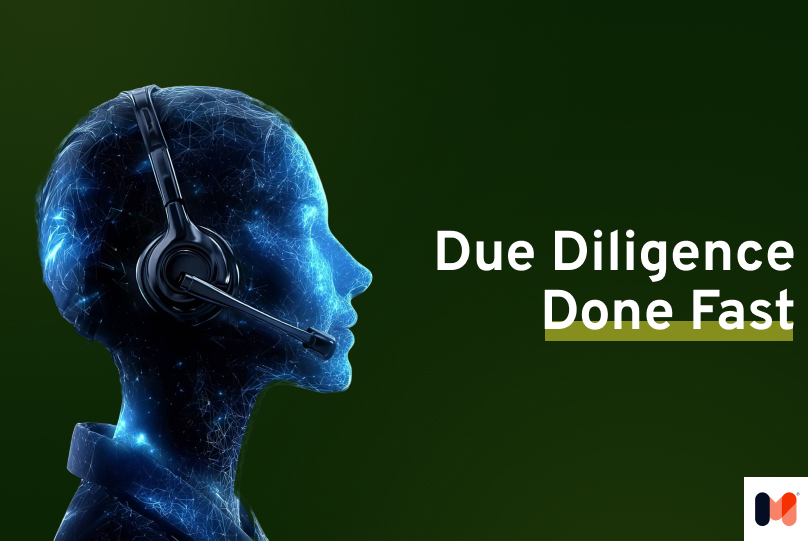Introduction
As the CEO of Mobile Reality and a Custom Software Development specialist, I’ve seen firsthand how crucial accurate project estimates are for the success of startups, especially when planning to build a SaaS platform. In the fast-paced world of startups, misjudging development costs can lead to missed deadlines, budget overruns, and ultimately, dissatisfied investors and users. What if you could take control of your development work and budget with more precise software development cost estimates? What if you could improve your estimation processes and deliver your SaaS platform more predictably and efficiently?
Despite the rise of low-code, no-code solutions, and the genAI era, creating software that truly meets the demands of thousands of online users still requires a custom approach. These solutions can be a great way to initially validate the market, but if validation goes well, building custom software that’s carefully aligned with your users' needs becomes essential for long-term success.
In this article, I’ll share insights from my experience on how to transform your estimation process, reduce uncertainties, and achieve better project outcomes for your SaaS business.
Understanding software estimation as a key to accurate planning for SaaS projects
From my experience, I can tell you that software development cost estimates are more than just numbers; they represent the expected effort, time, and specific types of specialists required to bring your SaaS idea to life. These specialists might include frontend and backend developers, mobile developers, DevOps specialists, QA specialists, and UX/UI designers. Accurate estimates ensure that you have the right mix of skills to deliver a successful product.
These estimates form the foundation of your project planning and execution. Without accurate cost predictions, navigating the complexities of SaaS development can quickly become overwhelming and risky.
I’ve learned that precise software estimation is crucial. It involves predicting not only the time required for tasks but also assessing their complexity. At Mobile Reality, we rely on data from previous projects across various industries to inform our estimates. Although we work on projects from different sectors, we often find that many features and processes share similarities. For example, processes like user authentication, payment integration, and data management might function in similar ways across platforms, even though each project requires unique adjustments that set it apart. These unique tweaks allow SaaS platforms to differentiate themselves in the market.
These similarities are a key advantage. They enable us to leverage our experience, learn from previous projects, and apply that knowledge to ensure accuracy in our estimates and proposed approaches. By understanding these commonalities, we can be more confident in predicting project timelines, resource needs, and potential challenges.
Another important aspect of our approach is how we manage project management costs. Unlike some companies that bill separately for project management, at Mobile Reality, we include this cost within the hourly rate of our product development team. This means roles like Frontend and Backend Developers, Mobile Developers, and other specialists handle the technical tasks while project management is seamlessly integrated, ensuring efficient coordination without added time and costs for our clients.
Estimates are not static. As your project evolves and more details emerge, you need to refine your estimates continuously. I often compare this dynamic quality of estimation to setting a course for a journey—you’ll need to adjust as new conditions arise, ensuring you stay on track to reach your destination.
Accurate software estimation is essential for planning SaaS projects and business tasks
For a startup founder, knowing the true cost of building your SaaS platform is critical. It’s not just about managing your budget—it’s about securing funding, setting realistic expectations, and building a solid foundation for your business. Accurate estimates are key to ensuring your project stays within budget and on schedule, which helps you earn the trust of investors and stakeholders. Over the years, I’ve seen firsthand why getting your estimates right makes all the difference, from earning investor trust to managing resources effectively.
Investor confidence
Investors need to see that your startup can deliver on its promises. Accurate software estimation shows that you have a clear understanding of the project scope, required resources, and timelines, which builds credibility and trust. When your numbers are solid, it’s easier to secure the funding you need to move forward. Clear, reliable estimates also demonstrate that you have a realistic plan for managing costs and risks, reassuring investors that their money will be used efficiently. From my experience, I’ve seen how this confidence can be the deciding factor for investors, especially in a competitive market where every dollar counts.
Efficient resource allocation
Knowing the effort required for each task allows you to allocate resources effectively, preventing bottlenecks and ensuring smooth development. Cost estimates are not just valuable for managing internal resources; they also help SaaS founders when collaborating with external software service providers. Clear estimates allow founders to prepare their internal teams for the proper scope, timeline, and expectations, ensuring smooth integration with external partners.
At Mobile Reality, we make sure our estimates allow us to allocate resources efficiently, which helps us provide competitive pricing without compromising on quality. This combination of internal and external coordination ensures that projects run smoothly and stay within budget, which is essential for startups working with limited funds.
Better decision-making
Precise estimates give you a clear picture of what needs to be done, when, and how much it will cost. This clarity is essential for making informed decisions, whether it’s about adjusting your platform’s features, reallocating resources, or managing risks. Cost estimates are particularly valuable for handling a limited budget efficiently. For instance, if a SaaS founder sees that the cost of building a specific feature or module is too high, they can pivot their focus to another area where the same budget could deliver twice as many features that users are actively demanding. This flexibility allows you to prioritize effectively, ensuring that your development efforts align with the greatest impact on your users and business goals.
Mobile Reality’s approach to software estimation and planning for SaaS development
At Mobile Reality, we understand that SaaS startup founders need a clear, straightforward, and flexible approach to estimating software development costs. Over the years, we’ve refined our process to ensure transparency and precision. I don’t just see this from a developer’s perspective—I approach it as an entrepreneur too. Beyond estimating costs for our clients, I’ve also invested in internal solutions and software, like our platform The NFT Reality. This dual perspective has given me a deeper understanding of the importance of accurate cost estimates, whether you’re building for a client or funding your own projects.
User stories as the basis for task planning
We base our cost estimates on user stories, which are detailed descriptions of how users will interact with your platform. This allows us to break down the project into manageable tasks that reflect real-world usage. For fixed-price projects, we often divide the project into modules and roles, with each role having its own set of user stories. Even if some features are duplicated across roles, they are always listed separately, but estimates are adjusted to avoid overpricing for repeated functionality.
Clear scope definition through requirements, collaboration, and UX/UI
One of the crucial aspects of accurate estimation is having a well-defined UX/UI design. UX/UI design typically accounts for 15 to 30% of the overall budget, while the frontend or mobile and backend components tend to be the most cost-intensive. Having a confirmed UX/UI project with the client is essential because it ensures that both the development team and the decision-makers (whether it’s the founder, investor, or other stakeholders) have a clear, shared vision of what the final product should look like. This alignment makes it easier to plan how the implementation should be handled, reducing ambiguities and minimizing the risk of scope changes later on.
If you already have clear documentation and a well-defined vision, we can provide a detailed cost estimate as part of our sales proposal. However, many startup founders need help defining the features that will be most cost-effective and impactful. That’s why we often conduct product development workshops. These workshops help clarify the vision for your Proof of Concept (PoC) or Minimum Viable Product (MVP), enabling us to offer more accurate and final estimates.
Tailored recommendations for better planning
We guide clients through decisions about which features to include and which development approaches will be the most efficient and scalable for their business case. This collaborative process ensures that you’re not just getting an estimate—you’re getting a roadmap to build your SaaS platform smartly. By taking into account both technical and design aspects, we make sure that your product is built to stand out in the market and meet user demands effectively.
Techniques for estimating software development costs and planning for success
When it comes to estimating the cost of building a SaaS platform, I see it as both an art and a science. Different techniques can help you arrive at accurate estimates, each with its own strengths.
One approach we often rely on is expert judgment. This method leverages the intuition and experience of seasoned developers and project managers who draw on their knowledge from past projects to navigate complex tasks. It’s effective, but it requires skilled personnel who truly understand the nuances of SaaS platforms.
Another valuable technique is analogous estimation, where we compare the current project to similar ones we’ve completed before. By drawing these comparisons, we can predict the likely effort and time required, using actual data as a benchmark. This approach is particularly useful when building a platform with features that resemble those in existing applications.
We turn to bottom-up estimation for projects that demand a more detailed breakdown. This method involves dividing the project into smaller, manageable tasks, estimating each one individually, and then aggregating these estimates to determine the overall cost. While it can be time-consuming, this technique provides a high degree of accuracy, making it ideal for SaaS platforms with complex functionalities.
Finally, agile estimation techniques offer a more adaptive way of planning. Agile methodologies often use story points, which give a comparative measure of effort rather than a fixed timeline. This flexibility allows teams to adjust their estimates as they gain new insights throughout the project, which is especially valuable in the ever-evolving environment of a startup.
Factors affecting software estimation accuracy and planning with requirements and risk in mind
Various factors can influence the accuracy of your SaaS development cost estimates, making it essential to consider them during the estimation process:
Project scope and requirements: Clearly defining the scope and requirements of your SaaS platform provides clarity on what needs to be built, reducing uncertainties and improving estimation accuracy. Conversely, a poorly defined scope can lead to underestimations, scope creep, and cost overruns.
Team expertise for effective task management: The skills and experience of your development team play a significant role in how accurately they can predict and execute project tasks. Experienced teams are often better at identifying potential challenges and estimating the effort required.
Technology stack and planning for complexity: The choice of technology stack impacts the complexity of development. For example, building a platform with cutting-edge technologies might introduce challenges that affect timelines and costs. Understanding the nuances of the chosen tech stack is crucial for making informed estimates.
Uncertainty and risk factors in task planning: Unexpected changes in project requirements or technical issues can significantly impact costs. Identifying and managing these risks early on can help mitigate their effect on the project.
Strategies for enhancing software estimation processes and planning SaaS development effectively
Through my years of experience, I’ve come to understand how refining the estimation process can lead to much more predictable and reliable project outcomes. One of the most effective approaches we use at Mobile Reality is starting with product development workshops. At the beginning of a project, these workshops help us define the scope and clarify requirements in collaboration with the client. This early engagement sets a solid foundation for accurate estimates because everyone is on the same page about what's needed and what the end goals are.
Another important aspect is planning for uncertainties. In software development, unexpected challenges are almost inevitable, so it's wise to build buffer time into your estimates. This extra time acts as a safety net, helping projects stay on track even when issues arise. It’s not just about having a cushion—it's about being prepared to handle surprises without derailing the entire timeline.
Drawing on historical data is also something we rely on heavily. Every project we complete adds to our understanding of patterns and trends, which we can then use to inform new estimates. If you're building a SaaS platform similar to others in the industry, this data-driven approach is especially valuable. It allows us to make informed predictions, reducing guesswork and ensuring that estimates are grounded in real experience.
Finally, no estimate should be set in stone. As a project progresses, it’s crucial to regularly review and adjust the estimates based on actual progress. I believe in the power of iteration—by conducting periodic check-ins, you can spot areas that need tweaking and refine your cost predictions using real-time insights. This flexibility keeps the project on course and ensures that the budget and timeline remain realistic—something I’ve seen save countless projects from derailment.
Final thoughts on estimating the cost of your SaaS platform
I can’t stress enough how vital accurate cost estimation is when it comes to building a successful SaaS platform. It’s the foundation that keeps everything else steady, from budgeting and scheduling to stakeholder confidence. Getting it right means understanding all the moving parts—like the project scope, clear requirements, the expertise of your team, and the technology stack you plan to use. Each of these elements can significantly impact how you plan and allocate your resources.
Over the years, I’ve seen how investing in the right tools and partnering with experienced professionals can make all the difference. When you have reliable data and a clear process, your estimates become much more precise, and that brings a sense of predictability and control to your project. It’s not always easy—there are challenges along the way—but I’ve found that strategies like continuous training, using buffer time, and staying adaptable can lead to far better results.
At Mobile Reality, we don’t just offer estimates. We offer a partnership to guide you from the initial concept to the final delivery. Let’s bring your vision to life together. Feel free to reach out or share your thoughts and experiences in the comments below—I’m always eager to connect.
SaaS Business Insights
The SaaS industry is ever-evolving, with new trends, technologies, and challenges emerging continuously. At Mobile Reality, we delve deep into the intricacies of SaaS business strategies, offering insights and expert guidance. We invite you to explore our comprehensive articles that cover a wide range of SaaS-related topics:
- Overcoming the Significant SaaS Challenges
- Elevate Your SaaS Strategy with Top SEO Tools
- SaaS Architecture Guideline: Multi Tenant vs Multi Instance
- PoC vs MVP: Uncovering the Critical Variances
- Mastering Automated Lead Generation for Business Success
- Maximizing Revenue: App Monetization Strategies
- Elevate Your Tech Strategy with a Fractional / Time CTO
These resources are curated to expand your knowledge and support your decision-making in the SaaS sector. Mobile Reality is recognized as a leader in SaaS development, providing cutting-edge solutions for various businesses. If you're considering expanding your SaaS capabilities or need expert guidance, contact our sales team for potential collaborations. Those interested in joining our dynamic team are encouraged to visit our careers page to explore exciting opportunities. Join us as we navigate the dynamic world of SaaS business!




